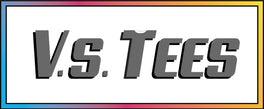The Decision on Push vs Pull Strategies: A Comprehensive Analysis
Posted by ARTEMIO NERVEZ JR

In the dynamic world of business and marketing the strategies employed to bring products to market are crucial for success. Among these, push and pull strategies stand out as foundational approaches, each with unique mechanisms and outcomes. This comprehensive analysis delves into the essence of push and pull strategies, comparing their advantages, challenges, and situational best uses, providing insights for businesses to make informed decisions.
Understanding Push and Pull Strategies
Push Strategy involves the manufacturer using its sales force and trade promotion activities to create consumer demand for a product. The goal is to "push" products through the distribution channels, ensuring they reach the end consumer. This strategy is often seen in industries where brand loyalty is low, and purchase decisions are made in-store.
On the other hand, Pull Strategy focuses on creating demand for a product directly from consumers, prompting them to "pull" the product through the distribution channel. This is achieved through advertising and consumer promotion activities. Pull strategies are common in markets where brand identity and customer loyalty play a significant role in the purchasing decision.
Advantages of Push and Pull Strategies
Push Strategy Advantages:
- Immediate Reach: Ensures products are immediately available in various retail outlets, increasing the chances of purchase.
- Control over Presentation: Manufacturers can influence how their products are displayed, priced, and promoted at the retail level.
- Volume Sales: Effective in driving volume sales, especially useful for new products or brands seeking a market presence.
Pull Strategy Advantages:
- Builds Brand Loyalty: By engaging directly with consumers, it builds brand recognition and loyalty.
- Long-Term Demand: Creates sustained demand for a product, leading to more stable sales.
- Consumer Choice: Empowers consumers, making them feel they have chosen the product themselves, rather than it being sold to them.
Challenges of Push and Pull Strategies

Push Strategy Challenges:
- High Costs: Requires significant investment in trade promotions and discounts to motivate retailers and wholesalers.
- Dependence on Retailers: Success heavily relies on the cooperation and effectiveness of retailers.
- Risk of Overstocking: Pushing too much product can lead to excess inventory and increased costs.
Pull Strategy Challenges:
- High Marketing Costs: Requires substantial investment in advertising and consumer promotions to generate demand.
- Slower Scale-Up: It may take longer for products to reach the market and achieve sales targets.
- Brand Dependency: Success is heavily reliant on the strength and appeal of the brand.
Situational Best Uses
Push Strategy is best when:
- Launching a new product and needing to build market presence quickly.
- Operating in a market with low consumer brand loyalty.
- Dealing with products that have a short buying cycle.
Pull Strategy is best when:
- The brand has a strong identity and loyal customer base.
- The product is unique and differentiated in the market.
- The goal is to build long-term demand and brand equity.
Conclusion
The decision between a push or pull strategy is not binary but rather a strategic choice based on the product, market conditions, and business objectives. Many businesses find a hybrid approach, leveraging the strengths of both strategies, to be most effective. By understanding the nuances of each strategy, businesses can better position themselves for success in the competitive marketplace. The key is to align the strategy with the company's overall goals and the specific needs of the target market, ensuring a coherent and effective approach to market entry and growth.
At VS Tees, selecting between a push or pull strategy transcends a simple either/or choice; it's a deliberate decision influenced by the nature of the product, prevailing market dynamics and overarching company aims. Numerous enterprises have discovered that a blended strategy, which capitalizes on the benefits of both push and pull methods, yields the best outcomes. Gaining a deep comprehension of the intricacies inherent in each approach enables businesses to enhance their positioning for triumph within the fiercely competitive market arena. Crucially, aligning the chosen strategy with the firm's broad objectives and the particular demands of the intended audience is paramount, ensuring a unified and impactful method for market penetration and expansion.





